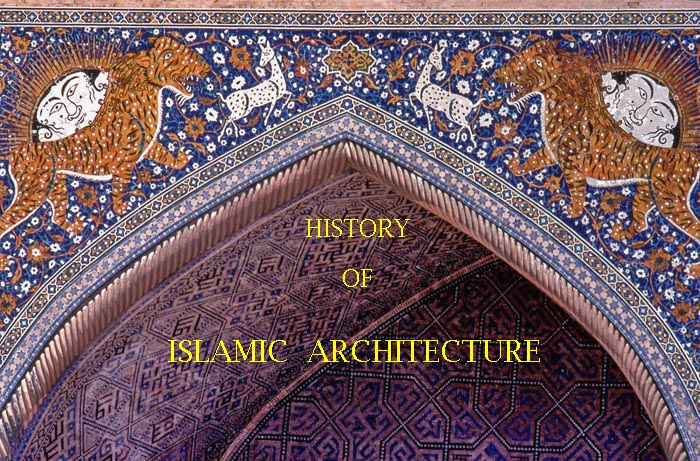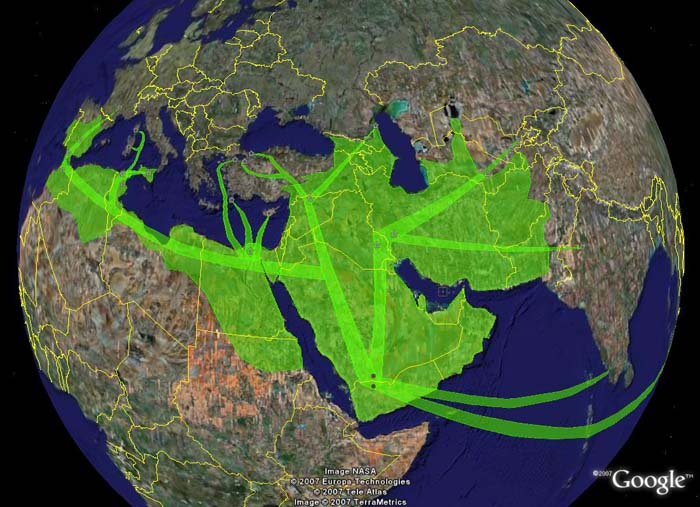
A
History of Islamic Architecture
625-1700

This richly illustrated History of Islamic Architecture is a survey which brings together the poetry of the Alhambra in Spain, Sinan's mosques in Ottoman Turkey, the monumental architecture of Timurid Samarkand, Safavid Isfahan, Mughal India, and innumerable sites in between. The emphasis is on the architecture of mosques, medresas, mausolea - and not necessarily on their importance to Moslems. Because of the magnitude of this project the choice of the selections is my own.

The
Spread of Islam
625-750, graphic
Rolf Gross
Islam is a rigorously monotheistic Abrahamic religion articulated by the Qur'an - a text considered by its adherents to be the verbatim word of God to Muhammad, his last Prophet. Muslims believe that the Qur'an was verbally revealed to Muhammad through the angel Gabriel (Jibril), gradually over a period of 23 years, 609 AD to 632 AD, the year of Muhammad's death.
The expansion of Islam in a mere 125 years from these origins in the deserts of Arabia through the Near and Middle East, and through North Africa to the Iberian Peninsula and the Atlantic Coast is a historical and cultural phenomenon that defies simple explanations. To be sure the already tottering East Roman, Sassanian, and Visigoth empires posed no serious resistance to the advancing Arabic armies. But their discipline, their militant fanaticism, and the Islamic law and order were espoused by indigenous people, who were tired of their kings and potentates: the first true ideological Peoples Revolution. The existing religions, Buddhism, Zoroastrians, Manicheans and Christians were quickly absorbed by Islam and spawned a creative cultural renaissance in art, literature and especially architecture, which was not subject to ideological restrictions. The high points of this early symbiosis were Al-Andalus and Umayyad Syria/Iraq.
This development is made more amazing by the fact that the Arabian invaders, outside their Islamic fervor, contributed only an anti-artistic philosophy: no images of God or man and a strict a-sensuality, compared to which Judaism and Christianity pale.
References
and Acknowledgments
My primary
source besides the internet was
Alfred
Renz, Geschichte und Stätten des
Islam von Spanien bis Indien,
Prestel Verlag, Munich, 1977 (in German)
For
images, plans, and text I extensively
used the archives of the Agha
Khan Foundation
Digital
Library of Archnet.org
Additional references are given in the
text.